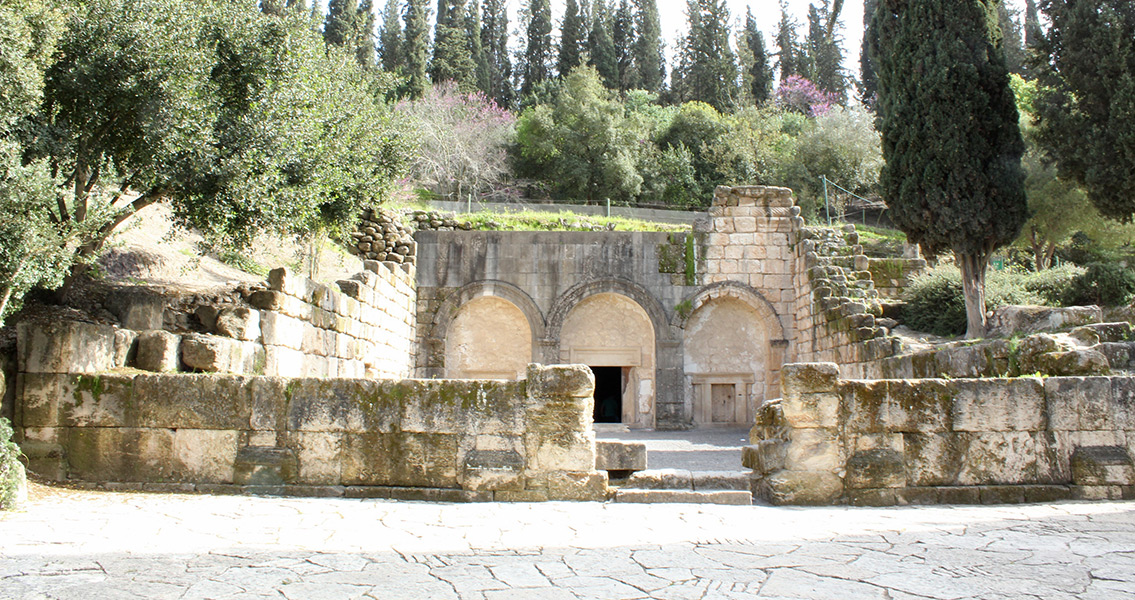<![CDATA[Archeologists with the University of Haifa, working at Beit She’arim, which means House of Gates in Hebrew, recently unearthed a huge gateway during excavations at the site. A relatively small town in northern Israel, Beit She’arim served as a center of Jewish life throughout the Roman and Byzantine eras and was the headquarters of the Jewish scholarly and judicial council (the Sanhedrin). The town was also where Rabbi Judah the Prince put together the Mishna, the basics of Jewish oral law, during the second century CE. While the discovery would seem appropriate given the town’s name, archeologists were actually surprised to discover the impressive gate along a road leading into the town. In the decades following the first site excavations in 1936, it was assumed by most experts that the town got its name for some other reason, because no city gates were ever found. In addition to the gate, which faces northeast and was built using limestone blocks, researchers also found post holes for doors and their locks, as well as an adjacent circular tower. The town is first mentioned by Jewish historian Josephus Flavius in the first century as Besara (in Greek), so scholars believed it was actually named Beit Sharay, another name for the Sanhedrin, or a court. Other researchers have suggested that the gates in the town’s name actually refer to the entrances leading to the extensive rock-hewn tombs in the hillside. This new discovery means that archaeologists will have to revisit the matter of Beit She’arim’s name, along with its role in the region. Still only partially excavated, the site consists primarily of a large necropolis of rock-cut tombs along with a few remnants of the town itself. Declared a UNESCO World Heritage Site in 2015, the site is managed by the National Parks Authority. The vast necropolis found there, which was carved out of the soft limestone, is home to over 30 burial systems. Its mausoleums, catacombs, and sarcophagi are decorated with elaborate figures and symbols and a significant quantity of carved and painted inscriptions in Aramaic, Hebrew, Palmyrene and Greek, that document two centuries of cultural and historical achievements. The gate was actually unearthed in an even smaller town, Beit Zaid, a Moshav which was founded by Alexander Zaid, a Jewish pioneer who discovered Beit She’arim immediately adjacent to the town. His granddaughter, Tali Zaid, one of the community’s 74 residents, found some ancient-looking stone blocks while renovating her home several years ago. After garnering approval from the Israel Antiquities Authority to dig, the gate was uncovered in late 2016. Although the gate hasn’t been analyzed to determine its age at this time, the University of Haifa research team believes it’s associated with the Roman period. “Most of the settlements in the Roman period aren’t fortified, and certainly not a relatively small Jewish town that wasn’t even considered an official Roman town. There were isolated fortified Jewish towns in the north, like Yodfat, but even those towns that were large and central didn’t include a large and impressive gate like this,” archaeologist Adi Erlich, who led the dig, told the Times of Israel. The town’s affluence could have served as a reason for the heightened security. Beit She’arim was the home to many prominent and wealthy Jews, so the community might have been named from the fortifications built to keep them safe. Another possibility is that it was the site of an important Roman fortress. Erlich and her team have plans to return and continue excavations at both Beit Zaid and Beit She’arim next season. ]]>
The First Gate Ever Found at a Jewish Town Named for Gates
